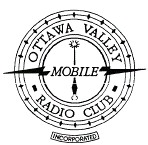For all the reasons we engage in amateur radio one thing we all share – sort of the principal ingredient in our stew – are frequencies, or - more precisely - access to them. This brief article will attempt to summarize how all that began, what has kept it going and what we all must look out for as the future unfolds.
Radio, as we know it, began in the late 19th and early 20th century when experimenters like Guglielmo Marconi took what had until then been a laboratory curiosity and began seeing how far these electromagnetic waves could travel and be detected. Critically, they also determined that by turning the waves on and off with a telegraph key they could transmit intelligence over distances without wires. They employed spark transmitters which, put simply, generated a huge burst of static. Using tuned circuits they could concentrate the burst to a specific frequency – more or less.
By the early twentieth century commercial, government and military interests were all in on the action as were countless “radio experimenters” and it was a nightmarish cacophony. International conferences in 1903 and 1906 began what became the international regulation of radio.
But what to do about the “experimenters”? By 1912 the international wisdom was that the only useful parts of the spectrum were below about 500 kHz. In 1912 the U.S. Congress banned individuals “not engaged in bona fide commercial business” from transmitting on wavelengths longer than 200 metres. Radio amateurs – as we can call them now – were banished to frequencies above 1500 kHz - then considered useless.
Surprise! In 1921 and 1922 radio amateurs began to discover the amazing properties of these “short waves”. A trial organized by the nascent American Radio Relay League demonstrated that communication across oceans was possible from every part of the U.S. to any country in Europe. In 1924 the then U.S. Secretary of Commerce, Herbert Hoover – himself a radio amateur - spearheaded the formal rebirth of amateur radio in his country and authorized amateur frequencies at 3.5, 7.0 and 14 MHz – our 80, 40 and 20 metre bands. In 1927, at an International Conference in Washington, a band at 28 MHz – our 10-metre band – was authorized.
Later in 1952, a band at 21 MHz – the 15-metre band – was authorized. And, at the World Administrative Radio Conference of 1979 (WARC-79), three small additions to amateur HF spectrum were authorized, viz., the “WARC bands” at 10.1 MHz (30 metres), at 18.068 MHz (17 metres) and at 24.89 MHz (12 metres).
By the 21st century, radio amateurs – organized through the International Amateur Radio Union (IARU) – recognized that the principal task ahead would be protection of these and other frequencies acquired over the preceding century. Nonetheless, small but significant additions to amateur spectra were realized with the 2200-metre band at 137 kHz (WRC-2007) and the 630-metre band at 472 kHz (WRC-2012) – both historic returns to the spectra banned a century before. Also, at the 2015 Conference amateurs gained a 15 kHz band in the 5 MHz range which for Canadian amateurs supplemented a domestic allocation of five “spot” frequencies made in 2014. While these three new allocations to amateur radio appeared in the Canadian Table of Frequency Allocations, the 630-metre and 60-metre allocations had to await formal authorization which only came with the re-issue of the RBR-4 document in July of this year. For the 630-metre band the power limitation is 5 watts eirp. Given the type of antenna the average amateur might have space for at 630 metres, a transmitter with an output power of over 150 watts would be necessary to attain 5 watts eirp.
Both the 630-metre and the 60-metre allocations entailed very difficult negotiations at the Conferences; however, Canadian amateurs ultimately fared well once authorized by our regulator. At 630 metres we are spared the requirement U.S. amateurs have to clear their planned operations with the electric-power utilities. At 60 metres Canadian amateurs are allowed 100 watts ERP – an exception to the 15 watt eirp in the international allocation.
As we look to the future, we have to take account of the current thrusts in the management of the radio spectrum. Since there is no new spectrum, new and existing entrants must explore sharing spectrum with existing users. Amateurs have traditionally resisted this seeking to keep our bands to ourselves. This will be more and more difficult to argue in the years ahead. Indeed, for the bands where we are a secondary user we will be entering the debate with few cards in our hands. In the 2023 Conference these issues will come to the fore with our bands at 1240 MHz, 3 and 10 GHz. We will be seeking to continue to use our secondary allocations there while possibly contending with expanding Radionavigation (for example like GPS) and International Mobile (for example 5G cellular) primary users.
To hope to be successful, we will have to continue to support RAC as a member society of the IARU. And, through the Defense of Amateur Radio Fund (DARF) to fund the travel expenses of a delegate to work within the Canadian delegation to the ITU working to protect our interests.
Finally, it is important that we continue to demonstrate amateur radio as a service and to engage in it in ways which highlight our technical and organizational skills which power the respect we enjoy in the domestic and international forums where our fate is being determined.
Bryan Rawlings VE3QN
Appears in Rambler Vol. 65 Issue 2 October 2022
